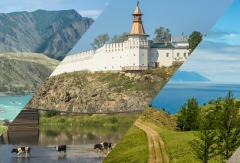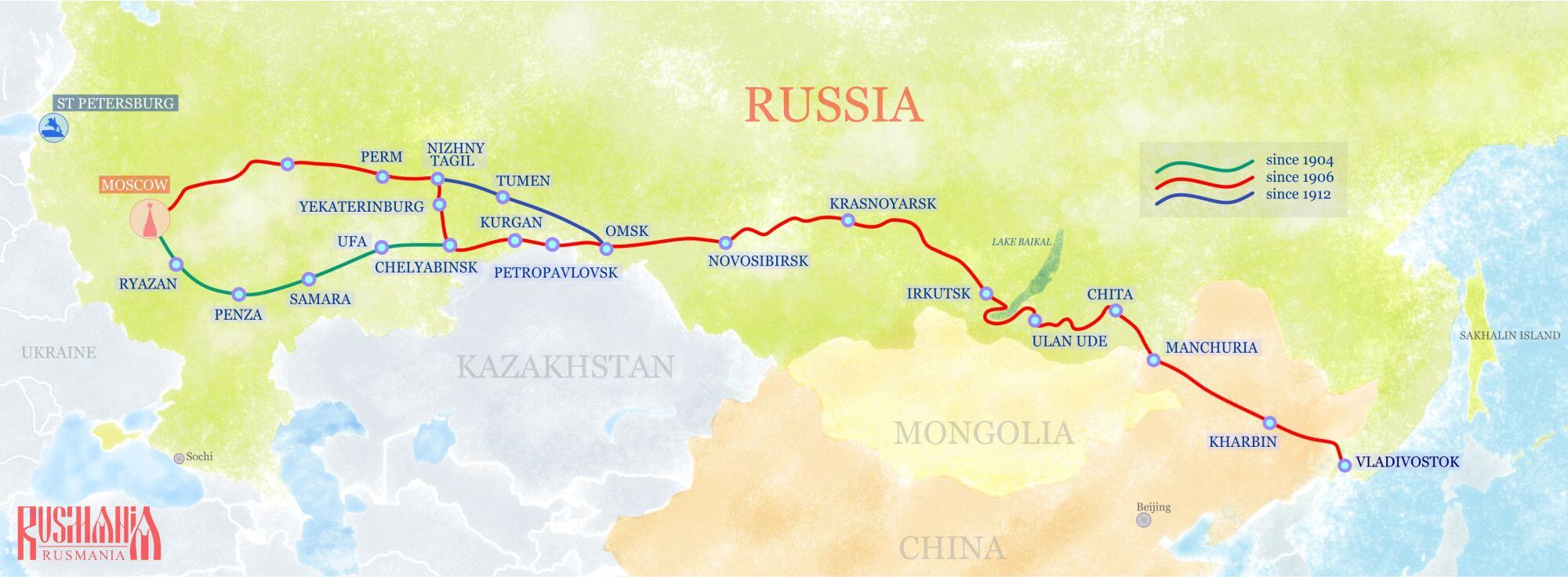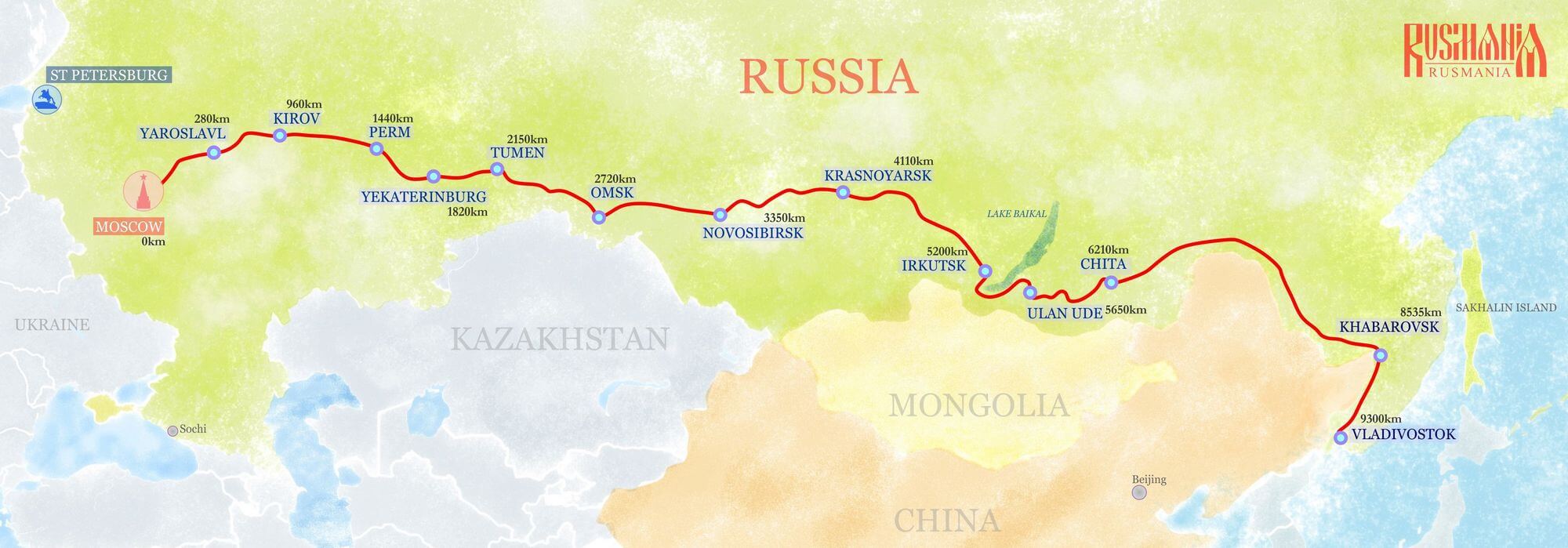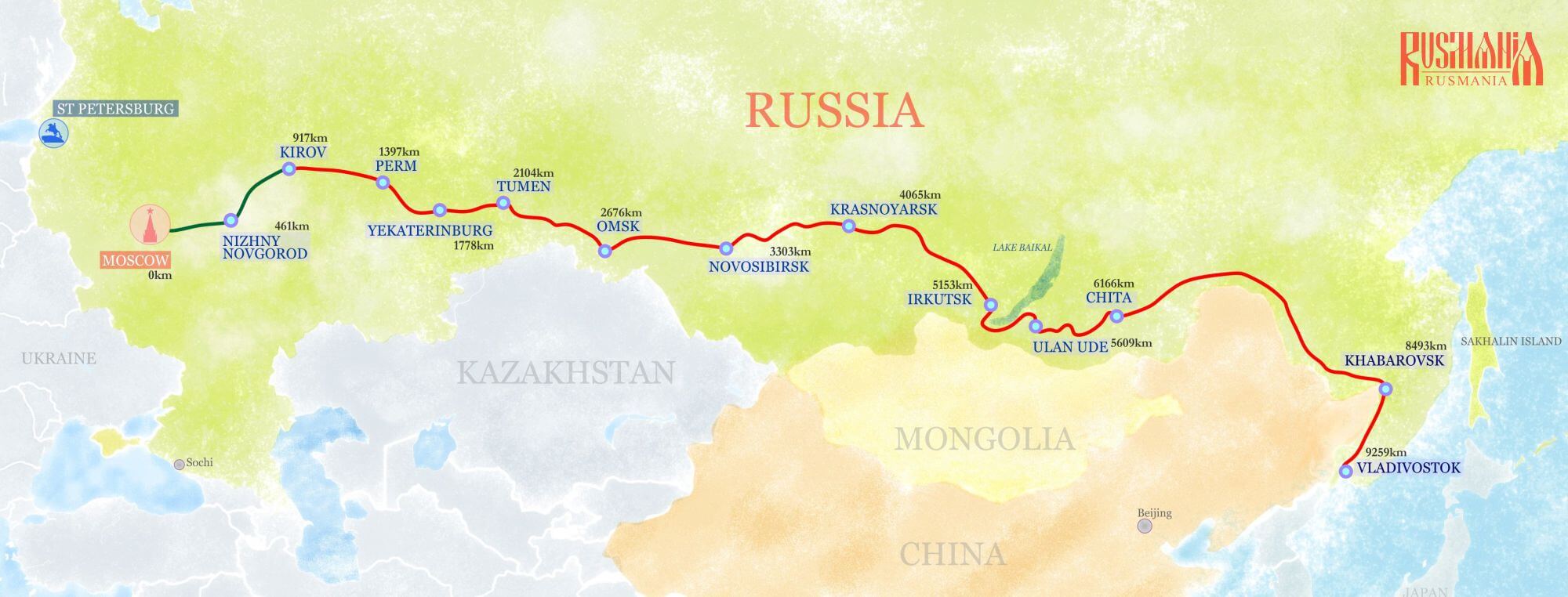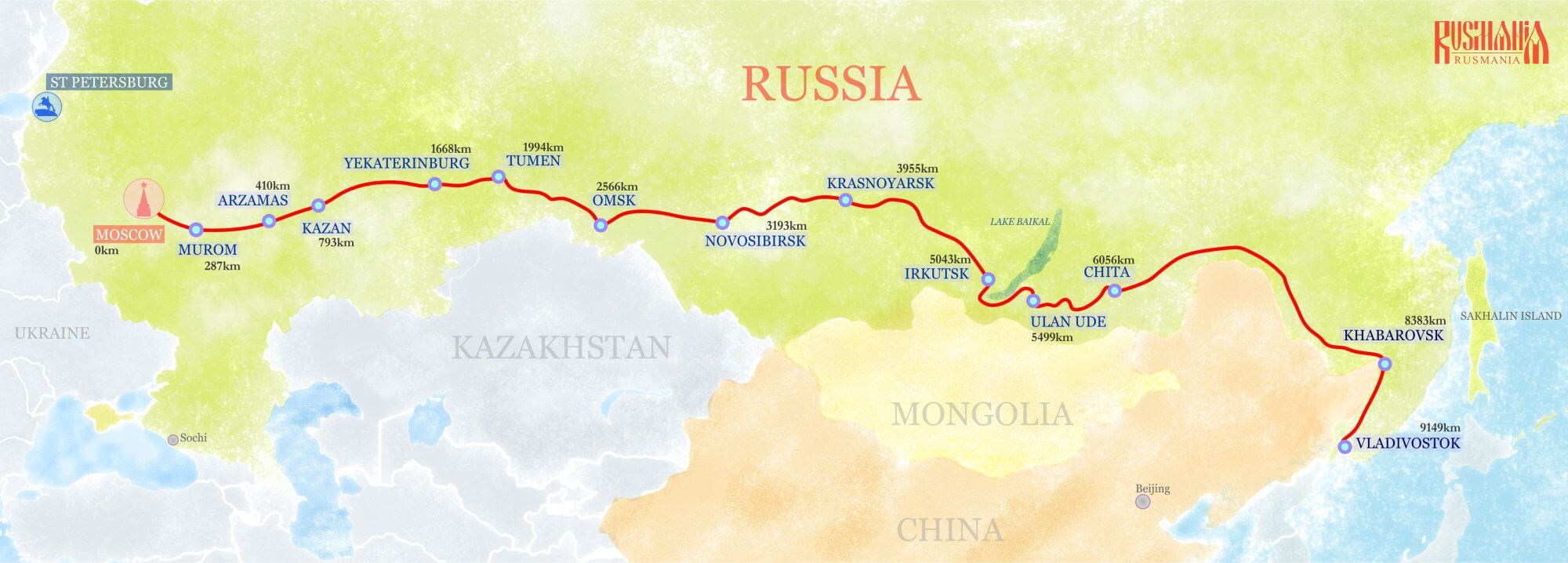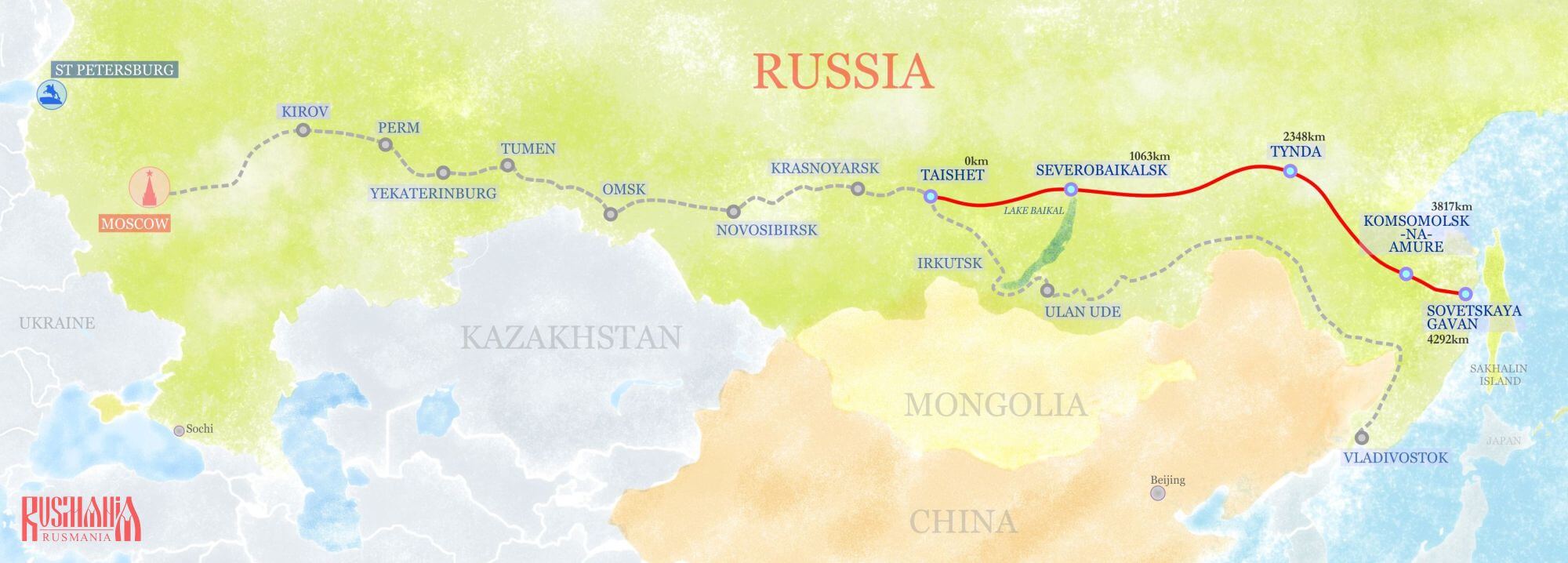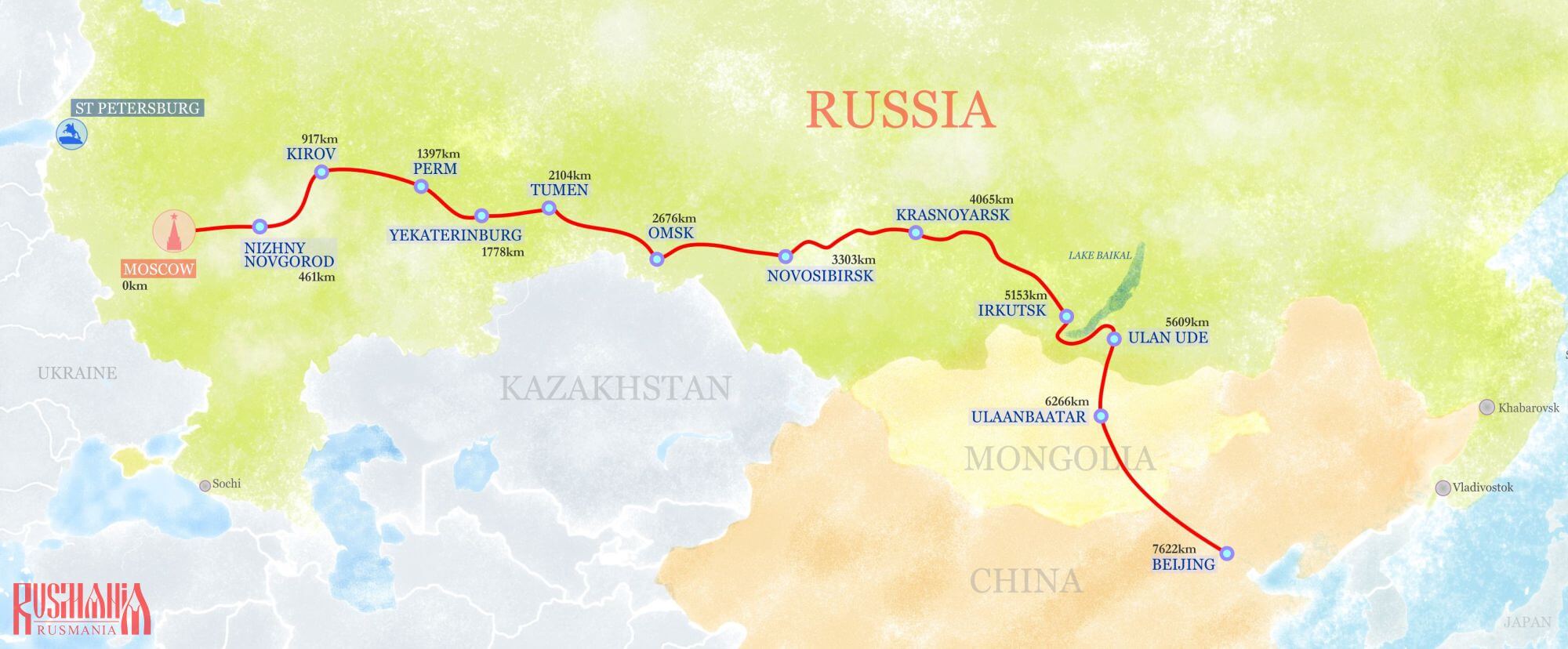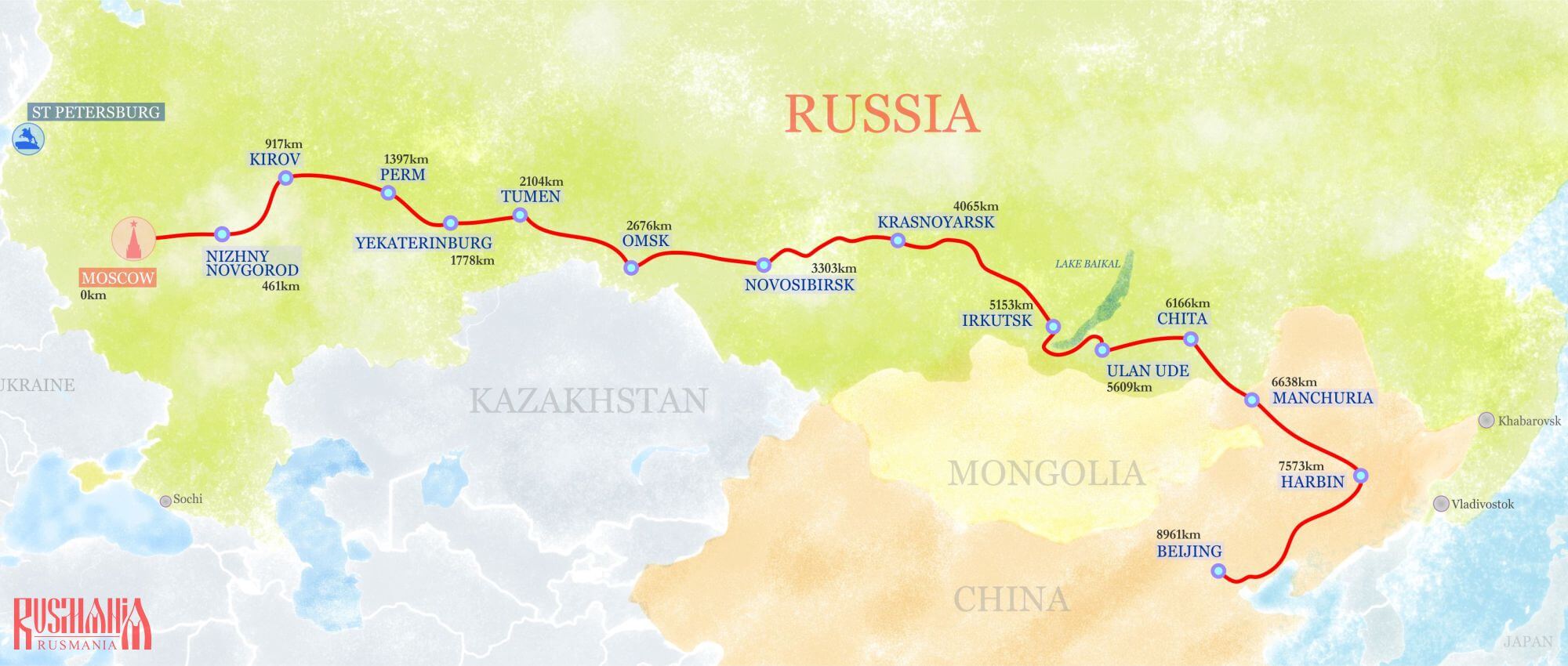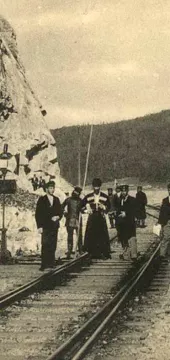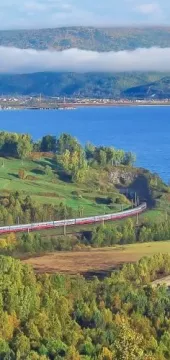Structure of Trans-Siberian Railway
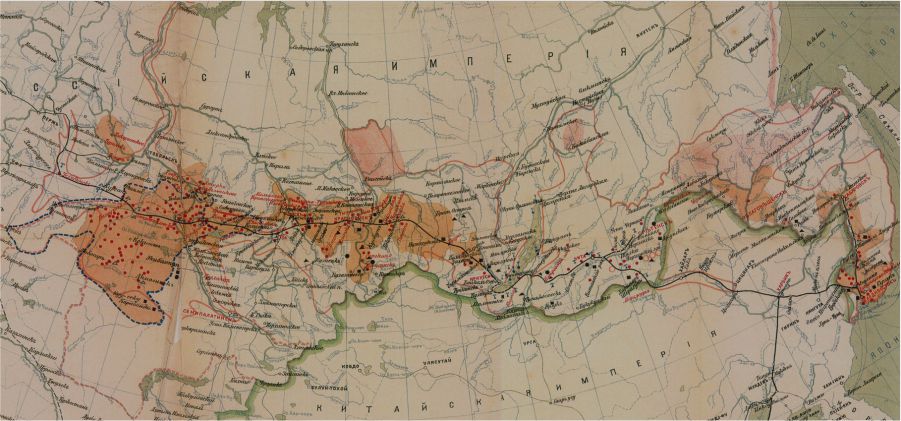

When we say Trans-Siberian we think about the biggest railway line on the planet with a start in Moscow and an end in Vladivostok, but most people know little of what lies along the 9,000km between these two cities. In reality what we call the Trans-Siberian consists of segments and in central Russia there are even a few variations of the route which were created at different times and almost all of them are still in use. Along the Trans-Siberia the railroad consists of 12 departments (out of the total of 17 which Russian Railways are divided into). It is good to know what cities you can visit along the certain route when you are planning the trip, so let’s see what these routes are like and how they the differ.

THE HISTORICAL ROUTE
Currently, the starting point of the Trans-Siberian Railway is Yaroslavsky Railway Station in Moscow, and the final destination is Vladivostok Railway Station.
Before the 1917 Revolution the starting point of the Great Siberian Way (the original name of the Trans-Siberian) was Moskovsky Railway Station of St Petersburg – the capital of the Russian Empire.
Also Vladivostok was not always considered the final point of the railroad: for a short period of time, from the end of the 1890s up to the final battle of the Russo-Japanese War of 1904-05, the final point of the Great Siberian Way was the naval fortress and city of Port Artur, located on the East China Sea coast, on China’s Liaodong peninsula which was leased from China.
Before the revolution of 1917 and for some time thereafter (until the end of the 1920s), the main route of the Great Siberian Way was as follows:
From Moscow, since 1904: via Ryazan - Ryazhsk - Penza - Syzran - Samara - Ufa - Chelyabinsk - Kurgan - Petropavlovsk - Omsk - Krasnoyarsk - Irkutsk - Lake Baikal - Mysovaya - Verkhneudinsk - Chita - Manchuria - Harbin - Grodekovo - to Vladivostok.
From St Petersburg, since 1906: via Cherepovets - Vologda - Bui - Sharyu - Vyatka - Perm - Nizhny Tagil - Yekaterinburg - Kishtim - Chelyabinsk - Omsk - Krasnoyarsk - Irkutsk - Lake Baikal - Mysovaya - Verkhneudinsk - Chita - Manchuria - Harbin - Grodekovo - to Vladivostok. In 1909, this route was straightened - a shorter road via Kungur from Perm to Yekaterinburg was built, and from October 1913 a train from the capital of the empire went along an even shorter route from Yekaterinburg via Tyumen to Omsk.
Until April 1905 Russia also owned the South Manchurian line - from Harbin through Changchun Far to the port and naval fortress of Port Artur.
If you want to travel this original historical route you would need a double entry Russian visa as the railway goes via Petropavlovsk in Kazakhstan. There is no direct train from Moscow to Vladivostok along this route.

THE MAIN (OR NOTHERN) ROUTE OF THE TRANS-SIBERIAN RAILWAY.
Distance – 9,300km.
This route is the one used to calculate the distance of the Trans-Siberian - from Moscow’s Yaroslavsky Railway Station to Vladivostok Railway Station. it runs via some cities of the Golden Ring route such as Sergiev Posad, Aleksandrov, Rostov Veliky and Yaroslavl, so if you don’t have time to do the whole Trans-Siberian you can do at least travel the first 300km (until Yaroslavl), and it is worth making a stop in all of these cities if you can. The direct train No. 100 (Moscow - Vladivostok) runs along this route.
Cities only on this route which are worth a stop are: Kirov – a nice city with a few historical streets and a lovely diorama depicting the first days of the revolution. Perm – a Soviet style city which has some very interesting museums and also the only Gulag museum in Russia which is situated in an original prison - Perm-36, however is it somewhat outside of the city.
Moscow ⇒ Yaroslavl ⇒ Kirov ⇒ Perm ⇒ Yekaterinburg ⇒ Tyumen ⇒ Omsk ⇒ Novosibirsk ⇒ Krasnoyarsk ⇒ Vladivostok
THE NEW ROUTE (NIZHNY NOVGOROD ROUTE) OF THE TRANS-SIBERIAN RAILWAY
Distance - 9259 km.
The only difference of the New Route of the Trans-Siberian Railway is that the train does not go along the north, via Yaroslavl, but south via Nizhny Novgorod. The rest of the route is the same. The premium passenger train Rossia (No. 2 Moscow-Vladivostok) runs along the New Route of Trans-Siberian railway.
Cities only on this route which are worth a stop are: Vladimir - one of the main cities along Golden Ring from where you can easily visit Suzdal and both cities have UNESCO-protected sites. Gorokhovets - among RusMania’s top 10 of quaint provincial cities off the beaten track.
Moscow ⇒ Nizhny Novgorod ⇒ Kirov ⇒ Perm ⇒ Yekaterinburg ⇒ Tyumen ⇒ Omsk ⇒ Novosibirsk ⇒ Krasnoyarsk ⇒ Vladivostok
THE SOUTHERN ROUTE (KAZAN ROUTE)
Distance: 9,149km
This route is the shortest one to the Urals. Note that trains following this route leave from Moscow’s Kazansky Railway Station, not Yaroslavsky. It does not duplicate the other routes until Yekaterinburg. There is no direct train from Moscow to Vladivostok running along this route so you will have to change trains anyway, but all three tourist trains run along this route, mostly because of the stop in Kazan which is one of the most beautiful cities in the country.
Cities only on this route which are worth a stop are: Kazan - the capital of the Republic of Tatarstan. Murom – a city on the Golden Ring famous for its monasteries and the Russian folk hero Ilya Muromets. Arzamas – a Historical City of Russia somewhat off the beaten track.
Moscow ⇒ Murom ⇒ Arzamas ⇒ Kazan ⇒ Yekaterinburg ⇒ Tyumen ⇒ Omsk ⇒ Novosibirsk ⇒ Krasnoyarsk ⇒ Vladivostok
BAIKAL - AMUR RAILWAY - BAM (БАМ)
Distance: 4,292km
The Baikal - Amur Railway was one of the main construction projects of the Soviet period in Russia. This section of the Russian Railways is connected to the Trans-Siberian Railway and starts in Eastern Siberia - Taishet Station - and finishes at Sovetskaya Gavan close to the Pacific Ocean. The distance between these two points is 4,292km. The railroad mostly runs among hilly and mountainous landscape. The highest point of the railroad is Mururinsky pass at 1,323m and located here is the longest tunnel in Russia – the Severo-Muisk Tunnel.
The railroad crosses a few of the biggest rivers in Russian such as the Lena and the Angara and also the northern part of Lake Baikal. It has rail branch – the Amur-Yakutsk Railroad which heads north up to the Republic of Yakutia where the coldest inhabited place in the world is located.
This route offers an amazing experience to see really remote places of Russia in Northern Siberia and the Russian Far East. It is possible to continue your trip after Soviet Gavan to Vladivostok. There are no direct trains from Moscow to Sovetskaya Gavan so you should make two changes - in Taishet or Tynda and then in Komsomolsk-on-Amur. More information about Baikal - Amur railway you can find here.
BRANCHES ON TRANS-SIBERIAN RAILWAY OUTSIDE OF RUSSIA
Although the classic Trans-Siberian railroad starts in Moscow and finishes in Vladivostok there are also a few branches which continue abroad into China, Mongolia and even North Korea. So in one trip it is possible to visit several countries, although you will most likely need to obtain more tourist visas.
TRANS-MONGOLIAN RAILWAY
Distance: 7,622km
Mongolia has its own trans-country railway with a total length of 1,111km crossing the Gobi Desert on route. Thanks to this railroad the route from Asia to Europe became shorter by 1,025km. The route goes via Sükhbaatar ⇒ Ulan Bator ⇒ Zamyn⇒Üüd. Almost all Trans-Siberian tourist trains head this way. Among passengers trains following this route are No. 004 (Moscow - Beijing), daily direct wagon No. 362 (Irkutsk - Ulan Bator), and passenger train No. 0063 (Moscow - Ulan Bator). All Trans-Mongolian tourist train run along this railroad. The border crossing in Russia is at Naushki station (about 4 hours stop) and in Mongolia is at Sükhbaatar (about 2½ hours stop).
TRANS-MANCHURIAN RAILWAY
Distance: 8,961km
This route crosses only Russia and China and does not pass through Mongolia. The only train running along this route is the premium train Vostok (Moscow - Beijing). It takes almost 6 days.
The last big Russian city on the Tran-Siberian along this route is Chita, then the road turns to the South. After Karymskaya Station, it crosses the River Onon and after a short stop at Borzya station the train arrives at Zabaikalskaya Railway Station the last station before China. Here the wheels will be changed to Chinese standards ones. The stop at this station can be up to five hours and, after crossing the border, on the Chinese side the train has a stop of about six hours for custom formalities.
►Routes ►Principal routes ►Trans-Siberian Railway► Structure of the Trans-Siberian Railway


